Death Traditions and Graveyards
DEATH
TRADITIONS AND GRAVEYARDS
DEATH
TRADITION IN ANATOLIA
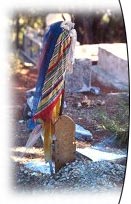 A
great majority of the people of Anatolia have remained under the influence of
tradition. In the foundation of main behaviour models which forms traditional
life of our people, ensuring them to possess specialty and formation however
there lays numerous customs, beliefs and ethic operations. Such kind of practices
so realised have shown variation and similarity from one region to another
region.
A
great majority of the people of Anatolia have remained under the influence of
tradition. In the foundation of main behaviour models which forms traditional
life of our people, ensuring them to possess specialty and formation however
there lays numerous customs, beliefs and ethic operations. Such kind of practices
so realised have shown variation and similarity from one region to another
region.
As in the case
of the three important event of the life, a great number of beliefs, customs,
tradition, ceremonies, rites, pattern behaviours, transactions have been also
grouped around death. Such beliefs, customs, transactions, ceremonies and pattern
behaviours which accumulated around the death and surrounded individuals with
the death are collected under three groups. Sets of traditions formed as pre-death,
during death and after death are explained briefly in the following.
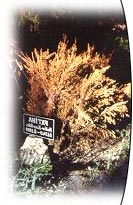 Generally
in Anatolia, people who have been restless through pressure of fear of death
in subconscious, also with desire to know about their future, have considered
a certain amount of unusual behaviours, use of tools and apparatuses in this
and that way, meteorological phenomena, action and voices of animals, images
in dreams as well as psychological and physiological changes in patients usually
as prediction of death. In beliefs of people, among symptoms that predict death,
which related with animals, have been taking a great and important place.
Some talents of animals, which are absent in human beings, their power of intuition,
physical characteristics, their consideration of being fortunate or ill-omened
have been playing great role in creation of such beliefs and their reaching
a universal line.
Generally
in Anatolia, people who have been restless through pressure of fear of death
in subconscious, also with desire to know about their future, have considered
a certain amount of unusual behaviours, use of tools and apparatuses in this
and that way, meteorological phenomena, action and voices of animals, images
in dreams as well as psychological and physiological changes in patients usually
as prediction of death. In beliefs of people, among symptoms that predict death,
which related with animals, have been taking a great and important place.
Some talents of animals, which are absent in human beings, their power of intuition,
physical characteristics, their consideration of being fortunate or ill-omened
have been playing great role in creation of such beliefs and their reaching
a universal line. 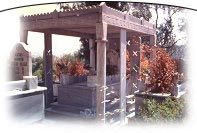 Basically
there lays also fear of death on the foundation of a certain amount of beliefs
which are accumulated around home, household, tool, apparatuses and food; and
they have been qualified by people usually as symptoms of death. Such natural
phenomena as eclipse of the Moon and the Sun, flight of a shooting star, a flash
of lightning, thunder, etc. have been construed usually as the prediction of
death according to beliefs of people. Assortment of images taking shape subconsciously
having been also supported by a number of symbolic associations have been generally
and widely construed as the sign of death for both the person who dreamed and
his/her relatives.
Basically
there lays also fear of death on the foundation of a certain amount of beliefs
which are accumulated around home, household, tool, apparatuses and food; and
they have been qualified by people usually as symptoms of death. Such natural
phenomena as eclipse of the Moon and the Sun, flight of a shooting star, a flash
of lightning, thunder, etc. have been construed usually as the prediction of
death according to beliefs of people. Assortment of images taking shape subconsciously
having been also supported by a number of symbolic associations have been generally
and widely construed as the sign of death for both the person who dreamed and
his/her relatives.
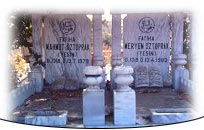 The
most natural type of announcement of events of death has occurred through crying
of relatives of the deceased. Neighbours who hear the death have come together
in the house of death try to share grief of relatives of the deceased, to console
them, to help them to do initial preparations. In villages, townships and small
cities the most suitable way of announcement is to ask hodja to call people
for a funeral service for deceased along with sending messengers for communicating
the incident from house to house. To announce the incident by giving announcements
through newspapers has been mostly witnessed in large cities.
The
most natural type of announcement of events of death has occurred through crying
of relatives of the deceased. Neighbours who hear the death have come together
in the house of death try to share grief of relatives of the deceased, to console
them, to help them to do initial preparations. In villages, townships and small
cities the most suitable way of announcement is to ask hodja to call people
for a funeral service for deceased along with sending messengers for communicating
the incident from house to house. To announce the incident by giving announcements
through newspapers has been mostly witnessed in large cities.
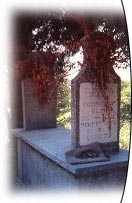 There
are also commercial organisations which undertake funeral affairs in great
cities. They have also assumed the work to give notices of death along with
performance of necessary preparations for burial services.
There
are also commercial organisations which undertake funeral affairs in great
cities. They have also assumed the work to give notices of death along with
performance of necessary preparations for burial services.
While a part of
transactions performed immediately after the death is directly related with
corpse, some other part however has been gathered around the corpse. Such transactions
which have been qualified as preliminary preparation for sending the death to
the other world have been resulted from seeing the death as a living person
and based on typical signs of fearing from the death, in some others hygienic
considerations and religious traditions have been played a role.
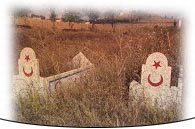 Followings
are the most seen transactions: Eyes of the death is closed, jaw is tied, head
is turned to direction of Mecca, feet are come together, hands are laid side
by side and on belly, all clothes are took off, in some places bed is changed,
metallic articles such as knife, iron, etc. are put on abdomen of the deceased
person, room in which the deceased person is present is cleaned up, room in
which the deceased lays is illuminated, Koran is read at the bedside of the
deceased.
Followings
are the most seen transactions: Eyes of the death is closed, jaw is tied, head
is turned to direction of Mecca, feet are come together, hands are laid side
by side and on belly, all clothes are took off, in some places bed is changed,
metallic articles such as knife, iron, etc. are put on abdomen of the deceased
person, room in which the deceased person is present is cleaned up, room in
which the deceased lays is illuminated, Koran is read at the bedside of the
deceased.
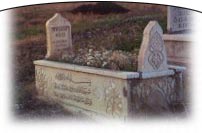 Following
performance of the said preliminaries, preparation which is necessary for both
religious and traditional aspects is initiated. This preparation consists of
three important operation; washing of corpse, wrapping in shroud and praying
performed at the funeral. Anybody who died is prepared for burial as quick as
possible. If a person died in the morning burial ceremony is performed at the
time of afternoon prayer, if he/she died afternoon, corpse remains at that night
and buried in the morning.
Following
performance of the said preliminaries, preparation which is necessary for both
religious and traditional aspects is initiated. This preparation consists of
three important operation; washing of corpse, wrapping in shroud and praying
performed at the funeral. Anybody who died is prepared for burial as quick as
possible. If a person died in the morning burial ceremony is performed at the
time of afternoon prayer, if he/she died afternoon, corpse remains at that night
and buried in the morning.
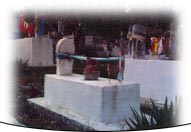 Burial
ceremony may be delayed for arrival of relatives who lived at distant places.
Burial
ceremony may be delayed for arrival of relatives who lived at distant places.
Another practice
which has been exercised by the great majority of Anatolian people is however
to wash the corpse before burial. Female corpses are washed by women washers,
male corpses by male washers. Persons who perform this work are professional
washers, hodjas, experienced washers, religious men/women, one of individuals
in the house of death or among neighbours in case of absence of any professional
person, and in same places deceased person’s loved ones upon his/her will.
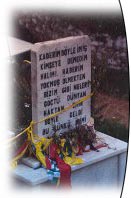 Washing
is carried out in washing rooms of cemeteries at great cities, at a secluded
corner of garden of house in villages.
Washing
is carried out in washing rooms of cemeteries at great cities, at a secluded
corner of garden of house in villages.
The second procedure
which is necessary for preparing corpse for burial is to shroud the corpse.
Colour of shroud is white. Number of pieces is different for woman and man.
This is also a tradition that has been implemented by the great majority of
the people of Anatolia. Furthermore, there are different traditions.
The third phase
is to perform prayer at the time of funeral. According to Muslim Religion a
number of conditions are required to perform praying at the funeral.
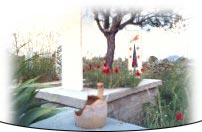 After
praying performed at the time of funeral, coffin is carried to cemetery by
religious community. Dead person is laid in grave in the manner that his/her
right hand side faces direction of Mecca. Dead person is buried in grave usually
without coffin. However, sometimes dead person may be buried with coffin. It
is a widespread practice to inscribe and cut epitaphs and signs on tombstones
for the purpose of describing identity, sex, destiny of dead person.
After
praying performed at the time of funeral, coffin is carried to cemetery by
religious community. Dead person is laid in grave in the manner that his/her
right hand side faces direction of Mecca. Dead person is buried in grave usually
without coffin. However, sometimes dead person may be buried with coffin. It
is a widespread practice to inscribe and cut epitaphs and signs on tombstones
for the purpose of describing identity, sex, destiny of dead person.
In Anatolia there
are certain days in which dead person has been commemorated through religious
ceremony and meal. First of all comes the 40th day, 52nd
day and anniversary of dead person. Although it is very seldom, on the third
and seventh days dead person has been also commemorated in a certain way. In
fact, such days corresponding to certain numbers have become important due to
religious, magical and traditional qualifications brought therein; and gradually
a number of customs have been inserted into their structure as a main element.
After the event
of death the most significant and salient behaviour is however mourning by deceased
person’s relatives. Mourning is reactions felt, bewilderment, revolt and grief
in anybody who loses his/her relative as the result of this event. Mourning
in which we have been depending in respect to social, economical, biological
and emotional aspects, grief that we have felt because of loss of a person,
is a mere human reaction.
 Mourning
is to express grief and sorrow felt upon the loss of people who are considered
important for us by the community and one of our relatives within social
patterns. Customs concerning mourning which is of a social nature, transactions
related with these customs are exercised for the purpose of avoidances, betrayal
of the person felt grief, accustoming him to the new situation for a certain
period, relieving his distress and gradually making him feel better. All around
the World, both in primitive and high cultures a number of traditions and ceremonies,
which have been practices for this purpose, have been witnessed.
Mourning
is to express grief and sorrow felt upon the loss of people who are considered
important for us by the community and one of our relatives within social
patterns. Customs concerning mourning which is of a social nature, transactions
related with these customs are exercised for the purpose of avoidances, betrayal
of the person felt grief, accustoming him to the new situation for a certain
period, relieving his distress and gradually making him feel better. All around
the World, both in primitive and high cultures a number of traditions and ceremonies,
which have been practices for this purpose, have been witnessed.
Another practice
performed after burial ceremony is the meal of dead person. This meal which
consists of a significant portion of traditions and beliefs related with death
has been emphasising that dead person is also in need of eating and drinking
in the other world along with other things on the one part, and revealing the
fact that transition ceremonies accompanying the event of death is necessary
among people, on the other part. Because, in order that farewell of dead person
to the other world is to be full and valid, along with religious rules and procedures,
traditional incidents should also be fulfilled. Otherwise, it is believed that
soul of dead person would disturb his relatives who are alive.
EPITAPHS
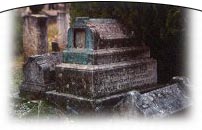 Tombstones
are the most beautiful examples expressing Turk’s rich inner world, fine taste,
high thought with their structural features and with inscriptions cut thereon.
These are such tombstones that they are sometimes a history, sometimes lament,
and mostly a grievous and painful echo felt via words of dead person. Personalities
and identifications have been realised through their forms, inscriptions. Graveyards
are museums, tombstones are however monuments of dead persons laying therein,
evidence of their existence.
Tombstones
are the most beautiful examples expressing Turk’s rich inner world, fine taste,
high thought with their structural features and with inscriptions cut thereon.
These are such tombstones that they are sometimes a history, sometimes lament,
and mostly a grievous and painful echo felt via words of dead person. Personalities
and identifications have been realised through their forms, inscriptions. Graveyards
are museums, tombstones are however monuments of dead persons laying therein,
evidence of their existence.
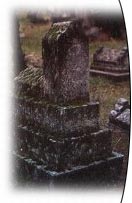 Personalities
are shown on tombstones of elderly dead persons, aspiration for being unsatisfied
in the world on tombstones of those who died young. Some of them passed away
by a natural death, some passed away unexpectedly. Goodness, beauties have been
expressed on these tombstones with all sorrow, clarity. Some readers of these
tombstones cry, some indulge in a deep thought. With this thought the real philosophy
has been made beside that tombstone.
Personalities
are shown on tombstones of elderly dead persons, aspiration for being unsatisfied
in the world on tombstones of those who died young. Some of them passed away
by a natural death, some passed away unexpectedly. Goodness, beauties have been
expressed on these tombstones with all sorrow, clarity. Some readers of these
tombstones cry, some indulge in a deep thought. With this thought the real philosophy
has been made beside that tombstone.
Traditions, customs,
social structure of the community have been seen on all of these tombstones.
There are wishes, desires. Worthlessness of the World has been also realised
through epitaphs on these tombstones. There are mystery of study, success in
lines on them. These tombstones had been called as “Balbal” by ancient Turks.
“Balbal” had shown heroism of the ancient Turks. Tombstones of today however
have been revealing philosophy of life, feeling and thought, point of view on
the universe, belief, global view of the same nation.
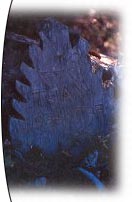 Tombstones
are at the same time the beautiful examples of products of language. They are
a rich treasury for linguists, historians, folklore activists, philosophers,
man of letters; they are a great gift presented like a treasury. In brief, tombstones
are pages of history, pages of literature coming from the past. Forgotten pages
of history can also be seen on them.
Tombstones
are at the same time the beautiful examples of products of language. They are
a rich treasury for linguists, historians, folklore activists, philosophers,
man of letters; they are a great gift presented like a treasury. In brief, tombstones
are pages of history, pages of literature coming from the past. Forgotten pages
of history can also be seen on them.
Unfortunately,
tombstones cannot also resist against time; they are losing their sovereignty
in the war against time, disappearing in the nature. Race of contemporary civilisation
has been eliminating old graves by considering them even ancient.
We, human beings,
however, are uninterested, unfaithful creatures. Somehow or other we fail to
understand, do not want to understand that our future will same as the fate
of tombstones which have been now experienced. Everyday we have been running
away from them more than before, we have been severing from our past.
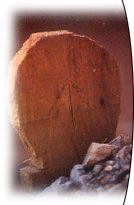 I
say that the way that we could bid forgiveness, being excused from our past
passes through examination of tombstones. Inscriptions which are available on
Tombstones in İnegöl have been compiled by myself within such feelings.
I
say that the way that we could bid forgiveness, being excused from our past
passes through examination of tombstones. Inscriptions which are available on
Tombstones in İnegöl have been compiled by myself within such feelings.
1st
Picture: Balıkesir Edremit, Arıtaş Village
6th Picture: Amasya Taşova, Güvendik Village
7th Picture: Amasya Göynücek,Yukarı Çulpara Village
8th Picture: Aydın Bozdoğan, Alamut Village
9th Picture: Aydın Bozdoğan, Alamut Village
10th Picture: Uşak Eşme
11th Picture: Uşak Karahallı, Paşalar Village
12th Picture: Gaziantep
13th Picture: Gaziantep
14th Picture: Artvin, Binat Village
15th Picture: Balıkesir Edremit, Tahtakuşlar Village